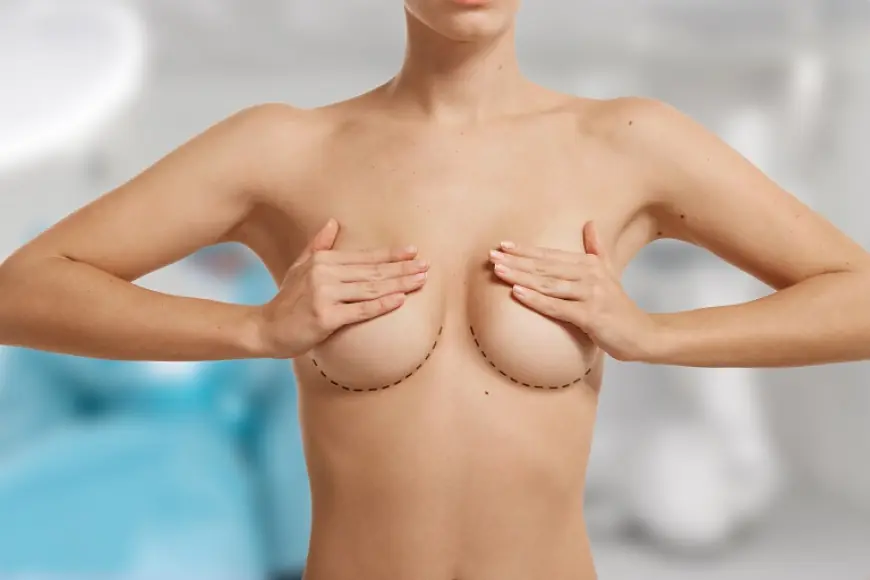Breast Reduction Surgery Techniques: Which One is Right for You?
Recovery depends partly on the chosen surgical approach. More invasive techniques like the anchor incision often require longer healing and scar management.

Breast reduction surgery is a transformative procedure that helps individuals alleviate physical discomfort and achieve a breast size that aligns with their body’s proportions. With various techniques available, choosing the right method can seem overwhelming. This comprehensive guide explores the most common breast reduction surgery(عملية تصغير الصدرفي الرياض) techniques, helping you understand each one and decide what suits your needs best.
Understanding Breast Reduction Surgery
Before diving into the specifics, it’s important to grasp what breast reduction surgery entails. This procedure removes excess breast tissue, fat, and skin to reduce breast size, alleviate pain from overly large breasts, and enhance body contour. Many undergo this surgery not just for aesthetic reasons but also to improve posture, ease physical activities, and boost self-confidence.
The breast reduction surgery technique you choose depends on several factors, including your breast size, skin elasticity, desired outcome, and your surgeon’s expertise. Understanding these techniques empowers you to make an informed decision tailored to your body and goals.
Common Breast Reduction Surgery Techniques
Several surgical methods are used in breast reduction, each with unique benefits and considerations. Here are the most widely utilized techniques:
Anchor or Inverted-T Technique
The anchor technique is the most traditional and versatile approach. It involves three incisions: one around the areola, one vertically from the areola to the breast crease, and one horizontally along the breast crease, forming an anchor shape.
This method is suitable for those with very large breasts or significant sagging as it provides excellent reshaping and skin removal capabilities. Because it allows for the most precise sculpting, results tend to be long-lasting, although scars may be more noticeable initially.
Vertical or Lollipop Technique
The vertical reduction method involves two incisions—around the areola and vertically down to the breast crease, creating a lollipop shape. It avoids the horizontal incision along the breast crease.
This technique is ideal for moderate breast reductions and women with less severe sagging. It offers a good balance between effective reduction and more discreet scarring. Recovery can be faster, and the breasts typically maintain a natural, lifted appearance.
Scarless or Liposuction-Only Technique
For candidates whose breast tissue reduction is primarily fat-based with good skin elasticity, the scarless technique using liposuction might be an option. Fat is removed through tiny incisions using a cannula.
This method results in minimal scarring and a quicker recovery time. However, it is not effective for those needing to remove significant glandular tissue or excess skin. Additionally, liposuction alone typically can’t correct breast sagging, so ideal candidates are carefully selected.
Horizontal or Crescent Technique
The crescent technique uses a small incision along the upper half of the areola. It is generally reserved for minor breast reductions or when asymmetry correction is needed.
The benefit is minimal scarring, but it is only suitable when limited tissue removal is involved. This technique offers subtle reshaping but doesn’t accommodate larger reductions or significant lifts.
How to Choose the Right Technique for You
Choosing the optimal breast reduction surgery technique depends on several important factors:
Breast Size and Volume to be Reduced
Larger reductions often require more extensive incisions like the anchor technique to remove skin and tissue safely. For smaller reductions, vertical or liposuction methods may suffice.
Skin Quality and Elasticity
Good skin elasticity can allow for less invasive techniques like vertical reductions or liposuction, while poor skin tone may necessitate more skin removal, requiring methods with more incisions.
Desired Breast Shape and Position
If you want a lifted and reshaped breast with a higher nipple position, techniques involving vertical or anchor incisions are more effective for repositioning. Those seeking only minor size adjustments may opt for less invasive options.
Personal Recovery Preferences
Some techniques involve longer healing times and more visible scars, while others have quicker recovery but limited reshaping capabilities. Balancing your lifestyle and downtime availability is essential.
Surgeon’s Experience and Recommendation
Your surgeon’s skill with various techniques will guide the best choice for your unique anatomy and goals. A thorough consultation can help clarify which method will deliver optimal results.
Recovery Expectations and Scarring
Recovery depends partly on the chosen surgical approach. More invasive techniques like the anchor incision often require longer healing and scar management. Vertical and liposuction methods typically result in faster recovery and less noticeable scars.
Post-surgery care includes managing swelling, wearing support bras, and avoiding strenuous activities for several weeks to ensure the best healing outcome. Scars often fade significantly with time, especially when properly cared for.
Frequently Asked Questions
Which breast reduction technique offers the least visible scarring?
The liposuction-only technique and vertical (lollipop) technique tend to leave the least visible scars compared to the anchor method.
Can breast reduction surgery correct sagging breasts?
Yes, techniques involving skin removal and nipple repositioning, such as anchor and vertical incisions, effectively address sagging.
Is liposuction a good option for everyone considering breast reduction?
No, liposuction is best for those with predominantly fatty breasts and good skin elasticity, not for patients needing glandular tissue removal.
How long does it typically take to recover from breast reduction surgery?
Recovery varies but generally ranges from 2 to 6 weeks depending on the technique and individual healing rate.
Will breast reduction surgery affect breastfeeding?
It may impact breastfeeding ability, particularly with more aggressive tissue removal, but many women can still breastfeed after surgery.
Are there risks associated with different breast reduction techniques?
All techniques carry risks like infection, scarring, or changes in nipple sensation. Your surgeon will discuss these based on the chosen method.
Conclusion
Breast reduction surgery offers multiple techniques each designed to suit different breast sizes, shapes, and patient goals. Understanding the pros and cons of the anchor, vertical, liposuction-only, and crescent techniques helps you make an informed decision. Consulting a qualified surgeon to assess your unique needs is the best way to ensure you select the right approach that balances effective reduction, aesthetic results, minimal scarring, and a smooth recovery.
What's Your Reaction?
 Like
0
Like
0
 Dislike
0
Dislike
0
 Love
0
Love
0
 Funny
0
Funny
0
 Angry
0
Angry
0
 Sad
0
Sad
0
 Wow
0
Wow
0




















































